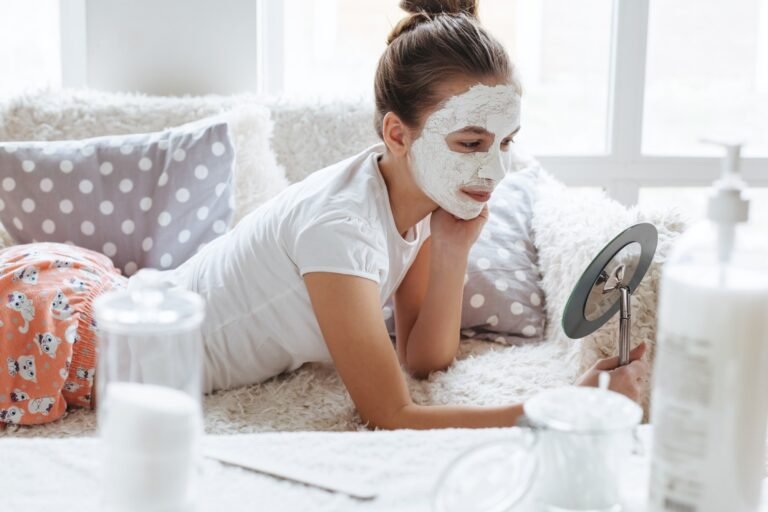Could your child’s grooming products be exposing them to harmful phthalates? New study reveals risks differ by race, ethnicity and gender.
Study: Effect of skin care products on phthalates and phthalate substitutes in children: the ECHO-FGS. Image credit: Alena Ozerova/Shutterstock.com
In a cohort study published in Environmental Health Perspectives, researchers from the United States of America (US) investigated the potential relationship between the use of skin care products (SCPs) by young children and urinary concentrations of phthalates/surrogate metabolites.
They found that some products, such as baby lotions and oils, were associated with higher levels of specific phthalates in urine, while other products had less or no association.
Background
Phthalates, harmful endocrine-disrupting chemicals, have been associated with changes in body composition, neurodevelopment, and immune function in children. Young children are particularly vulnerable to phthalate exposure due to their higher skin permeability and higher surface area to body mass ratio than adults.
Common sources of phthalates include SCP, food packaging, dust and drugs. While previous research has focused on adult or maternal exposure to phthalates during pregnancy, there are limited data on phthalate exposure in young children in the US, especially with regard to differences based on race, ethnic identity or gender assigned at birth.
Studies in children have linked higher urinary concentrations of phthalates to recent use of plastics and personal care products. However, little is known about how combinations of multiple SCPs contribute to phthalate exposure, particularly in children of diverse racial and ethnic backgrounds, highlighting the need for further research on these exposures.
Therefore, in the present study, investigators examined the relationship between SCP use by young children and urinary phthalate/substitution concentrations, accounting for variations by race or ethnicity and sex assigned at birth.
About the study
In the present multicenter, retrospective cohort study, data were obtained from 906 children from the Environmental Influences on Child Health Outcomes-Fetal Growth Study (ECHO-FGS) cohort.
Children were aged 4–8 years (mean age 6.75 years) and approximately 51.1% were male. Data collection included questionnaires completed by parents or guardians along with spot urine samples for chemical analysis. Using questionnaires, the researchers assessed the use of various SCPs applied to the children’s skin in the past 24 hours.
SCPs were categorized into 14 product types and four formulation types based on ingredients (phthalate-free or phthalate-free, paraben-free or paraben-free, pharmaceutical or non-pharmaceutical, and “organic” or non-organic).
Additional information was obtained on children’s diet, physical activity, early life history, daycare and school history, social communication, medical history, home and neighborhood, and behavior.
Non-fasting urine samples were analyzed for 16 phthalate metabolites/surrogate in 630 children. Children’s self-reported racial and ethnic identities were categorized as non-Hispanic Black (NHB, 31.75%), non-Hispanic White (NHW 26.35%), Hispanic (27.78%), or Asian/Pacific Islander (PI, 14 ,12 %).
Statistical analysis included the use of Spearman correlation, bivariate correlation screening, multiple linear regression, general linear regression models, and Bonferroni correction.
Results and discussion
NHB mothers had the highest rates of low income (44.3%) and NHW mothers had the highest rates of high income (75.7%). Urinary phthalate/surrogate metabolite concentrations were generally higher in NHB children, particularly for mono-benzyl phthalate (MBzP), mono-2-ethyl-5-carboxypentyl terephthalate (MECPTP), monoethyl phthalate (MEP), mono-(2- ethyl-5-hydroxyhexyl) phthalate (MEHHP) and mono-n-butyl phthalate (MBP). At the same time, the Hispanic and Asian/PI groups showed higher levels of monoisobutyl phthalate (MiBP).
Associations between specific SCPs and urinary metabolite levels varied by racial/ethnic identity, with some SCPs showing greater effects among different groups. For example, body lotion use was associated with higher MBzP concentrations. At the same time, oils were associated with increased levels of MEPs and low molecular weight phthalates, particularly among Asian/PI and Hispanic children.
Additionally, the use of specific SCPs was found to be influenced by the sex of the child assigned at birth, revealing different patterns in metabolite concentrations based on sex. Finally, four different exposure profiles of SCP use were identified, with higher exposure being associated with increased urinary phthalate/substitution concentrations.
The study is strengthened by a large sample size, the inclusion of a racially/ethnically diverse population, and the overall measurement of phthalates/surrogate metabolites.
However, the study is limited by inconsistent timing of the questionnaire, potential misclassification of exposure, reliance on the SkinSAFE database, exclusion of non-dermal products, lack of data on motivations for product use, and lack of consideration of lifestyle or clinical factors influencing exposure to phthalates.
Conclusion
In conclusion, the study revealed that use of SCPs in children aged 4 to 8 years is associated with specific urinary concentrations of phthalates/surrogate metabolites, which vary by race or ethnic identity and gender. Use of multiple SCPs is associated with higher urinary levels of HMW phthalates, indicating that SCPs may be a significant contributor to children’s exposure to these chemicals.
The findings suggest potential disparities in phthalate exposure/substitution and highlight the need for regulatory action to address the targeted marketing and formulation of SCPs.
Clinicians and advocacy groups could potentially use this information to guide parents in safer product choices. Further research is needed to confirm these findings.
